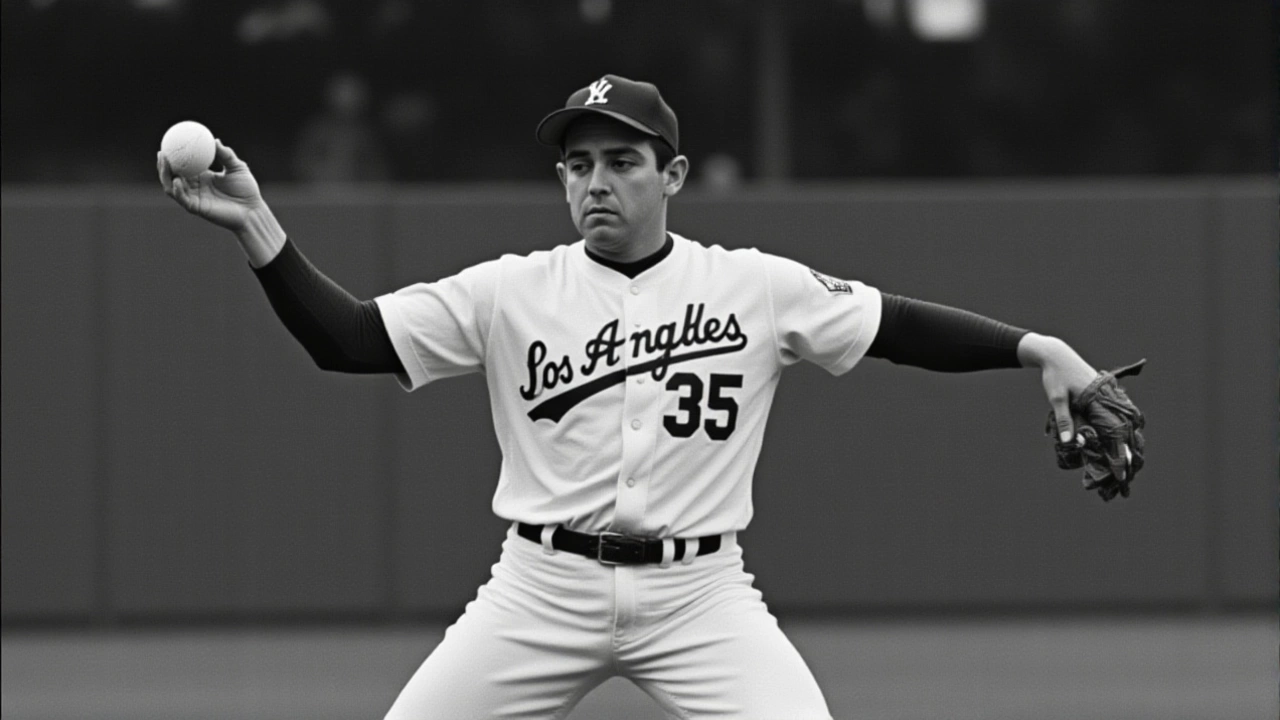On April 24, 1962, Sandy Koufax threw one of the most electrifying pitching performances in baseball history, striking out 18 batters in a 10-2 rout of the Chicago Cubs at Wrigley Field. The feat tied the Major League Baseball single-game strikeout record for nine innings—set by Bob Feller in 1938—and marked a turning point in Koufax’s rise from inconsistent starter to dominant ace. He didn’t just dominate; he carved up a lineup that included three future Hall of Famers, striking out Willie Mays, Orlando Cepeda, and Willie McCovey twice each. The win improved his 1962 record to 11-4 and dropped his ERA to 2.33. But this wasn’t just about numbers—it was the moment Koufax stopped being a pitcher with potential and became a legend.
The Breakthrough Season
Before 1962, Koufax was known more for frustration than dominance. Between 1955 and 1960, he posted a 36-40 record with a 4.10 ERA and averaged more than five walks per nine innings. He had the stuff—his fastball and curveball were devastating—but control and consistency eluded him. That changed in ’62. He trimmed his walks, sharpened his command, and began to harness his power. The game against the Cubs wasn’t an outlier; it was the culmination of months of refinement. He struck out the side in the first inning and retired seven of the first nine batters on strikeouts. By the fifth, he was already at 14 Ks. The crowd at Wrigley, used to seeing Cubs pitchers dominate, fell silent as the Dodgers’ left-hander turned the game into a clinic.A Near Collapse and a Comeback
Even legends have moments of doubt. In the fifth inning, Koufax’s rhythm cracked. A deep fly ball off Willie Davis’s glove was ruled a double—though many thought it should’ve been an error. Then came the walks: Billy Williams, Willard White, and then another to Lou Brock. The bases were loaded. One mistake, one bad pitch, and the game could’ve unraveled. But Koufax dug deep. He struck out Moe Thacker and Andre Rodgers to escape the inning, though Brock’s walk forced in a run. "I was afraid I might be tiring," Koufax admitted afterward. "I started aiming the ball." What followed was pure mastery. In the seventh, after Tony Balsamo balked with the bases loaded, the Dodgers extended their lead to 8-1. Cubs manager Lou Boudreau (note: correction—manager was Leo Durocher in 1962, not Tappe) protested the call and was ejected. The Dodgers added two more in the ninth on a two-run homer by Duke Snider. Williams got one back with a solo shot, but Koufax didn’t flinch. "It was a good pitch to a left-hander’s strength," he said of Williams’ homer. "A high inside curve. If I could take two pitches back, that’s one of them—and the ball to Brock."A Legacy Cemented
That 1962 season became the foundation of Koufax’s legacy. He finished with a 2.54 ERA—his first of five straight National League ERA titles. He struck out 269 batters that year, leading the league. But the 18-strikeout game was the spark. He’d tie his own record twice more: once on September 9, 1959, against the San Francisco Giants, and again in 1965. In 1965, he shattered Bob Feller’s single-season strikeout record with 382 strikeouts and became the first pitcher ever to throw four no-hitters. He retired at 30, his arm gone from years of pain, but his legend was already immortal.
Why This Game Still Matters
Today, 18 strikeouts in a nine-inning game is still among the rarest feats in baseball. Only a handful of pitchers have matched it since—Roger Clemens twice, Kerry Wood, and Randy Johnson. But Koufax did it three times, and he did it when the game was slower, when pitch counts weren’t monitored, when pitchers still finished what they started. He didn’t just outpitch the Cubs; he redefined what a pitcher could be. The 1962 game wasn’t just a stat line—it was a statement. He was no longer the pitcher who could throw hard but couldn’t find the plate. He was the pitcher who could make legends look helpless.What Came Next
The Dodgers went on to win the 1963 World Series, with Koufax as the undisputed ace. He won the Cy Young Award in 1963, 1965, and 1966—the only pitcher to win three in a row. He was elected to the Hall of Fame in 1972, the youngest ever at age 36. His number 32 was retired by the Dodgers in 1972, and his statue stands outside Dodger Stadium. But for many who watched, that April night in Chicago was the moment they knew they were witnessing something timeless.Frequently Asked Questions
How rare is an 18-strikeout game in MLB history?
Only seven pitchers in MLB history have recorded 18 strikeouts in a nine-inning game. Sandy Koufax did it three times—more than any other pitcher. The most recent was Max Scherzer in 2016. It’s rarer than a perfect game, and Koufax’s ability to achieve it across three different seasons underscores his dominance.
Who were the key hitters Koufax struck out in that 1962 game?
Koufax struck out three future Hall of Famers twice each: Willie Mays, Orlando Cepeda, and Willie McCovey. All three were among the most feared sluggers of their era. Mays had 660 career home runs; Cepeda won Rookie of the Year in 1958; McCovey was a .270 lifetime hitter with 521 homers. Getting them out twice each was like shutting down an All-Star lineup twice over.
Why did Koufax’s career end so early?
Koufax retired in 1966 at age 30 due to chronic arthritis in his pitching elbow, which caused severe pain and limited his mobility. He was diagnosed with the condition in 1965, and doctors warned him that continuing could lead to permanent damage. Despite being at his peak, he chose to walk away rather than risk his long-term health—an unprecedented move for a pitcher of his caliber.
How did Koufax’s 1962 season compare to other great pitching years?
In 1962, Koufax posted a 2.54 ERA, 269 strikeouts, and a 16-12 record. While his win-loss record wasn’t eye-popping, his ERA was the best in the National League, and his strikeout total ranked second. He led the league in ERA for the first of five straight years. By modern metrics like FIP (Fielding Independent Pitching), his 1962 season ranks among the top 20 of the last 70 years.
Was this game televised, and how was it received at the time?
The game was broadcast locally on WGN-TV, but national coverage was limited. Newspapers, however, went wild. The Chicago Tribune called it "a masterpiece of control and power." The Los Angeles Times ran a front-page headline: "Koufax Stuns Cubs With 18 Strikeouts." Fans who were there say the silence after his final strikeout was the loudest they’d ever heard in Wrigley Field.
Did Koufax ever speak about this game later in life?
In later interviews, Koufax rarely dwelled on individual games, but he did recall the 1962 outing as a turning point. "That was the first time I felt like I wasn’t just throwing hard—I was thinking the game," he told Baseball Digest in 1985. "I knew where every hitter was vulnerable. That’s when I stopped being a pitcher and became a strategist."
